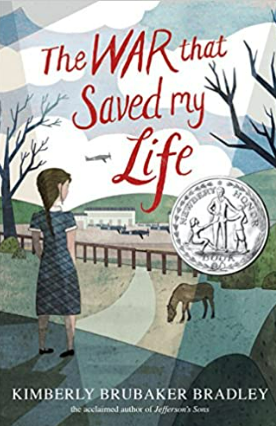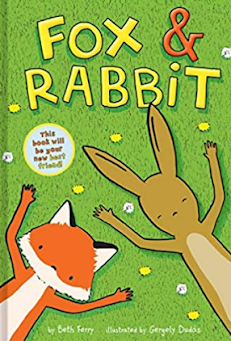Historical and Contemporary Realism
In the Newberry Honor and Schneider Family Book Award winning
book, The War that Saved My Life, the story is set in England as World
War II breaks out. Ada and her younger brother Jamie live with their abusive
mother. Due to her mother’s humiliation over Ada’s deformed foot, Ada is never
allowed outside a single room. However, as the war heats up and the city’s
children are evacuated to the country, Ada and Jamie sneak off. Ada and Jamie
now live with Susan, a woman who was opposed to taking in evacuees and especially
children.
Told with the voice and perspective of Ada, the narrative engages
readers as Ada learns more about the world in general, the war that is changing
everything, and begins to process the trauma from her past. Coming from a place
where Ada knew nothing of the outside world, the premise of the story helps to
explain to readers what is happening through Ada’s questions about the whys and
how things are different for the time period. Portrayed historically accurately,
Ada and the reader learn together things, such as what school was like and how
and why left-handedness was viewed as a mark of the devil or some of the real
effects of war wounds. As the adult in the book, Susan helps Ada and the reader
together by providing explanations of the events in a way that a child could
understand while not going so in depth as to lose the reader. Ada is able to
reflect on some of differing views as history unfolds, such as whether Dunkirk
was really a victory or a horrible tragedy or both, while her understandings of
the world around her and her own experiences also grow in insightful ways.
Overall, The War that Saved my Life blends fact and fiction in a manner that the background and characters help to explore complex events, both historical and personal, making them seem real to readers and bringing the readers along.
Bradley, Kimberly Brubaker. 2015. The War That Saved My
Life. 1st edition. New York, New York: Dial Books. ISBN: 978-0-8037-4081-5
Malian, a tween Penacook girl, was visiting her grandparents
at the Wabanaki reservation when the Covid-19 pandemic shut down all travel. While
Malian has lived away from the reservation since kindergarten, during the pandemic,
she becomes more connected with her heritage and the way that her ancestors
have survived many previous injustices. Early on, the wolf-like dog Malsum
appears as a guardian and a caretaker for Malian. His presence is a reminder of
the old stories and history woven throughout the book and how they come alive in
their resilience as another form of protector. In his presence, Malsum provides
a bridge to the old stories.
As Malian deals with the difficulties of online school with spotty,
broken internet, she comes to learn more from her past and better understand
the realities that her ancestors faced. Even as Malian stays with her
grandparents because of the lockdown, social services comes to assess if the
house is “fit” for Malian. Malsum scares away the worker, but it is eerily
similar to how Malian’s mother was taken away when she was little.
In isolation, Malian draws connections not only with her
past but also with her classmates and their histories giving the book a wider
perspective to transcend the specific setting. Themes of resilience and
community are strong in the stories. The setting of the book addresses full on
how some stereotypes of First Nations people and reservations came to be generationally
perpetuated. Malian’s grandparents and mother were both taken away from their
parents by Indian Services because the household was too poor but systemic
racism and forced relocation prevented the households from ever becoming “fit
environments.” When handing out the final assignment, even the teacher bravely
discussed how insidious racism and biases can be from her own experiences.
The book is written as if it were to be read aloud in short
verse, with only 5-7 words per line. The narrative line flows smoothly and lyrically,
especially when read aloud. While in many stories, there is simply narration
and dialogue, Rez Dogs has narration, dialogue between the characters,
and stories/histories inserted. These three literary styles are balanced and
all work together to move along the plot, engage the reader, and provide the
historical context.The stories and history told by Malian’s grandparents are very short
and relevant to the narrative line of the book, augmenting and enhancing rather
than dominating storyline. Overall, the mood of the book is a familiar one from
the pandemic of waiting, frustration, and then settling into a new way of life
for a while, where new information and skills are learned and become part of an
important identity.
Bruchac, Joseph. 2022. Rez Dogs. New York: Dial Books. ISBN: 978-0-593-32622-0



Thoughtful evaluation of your chosen titles.
ReplyDelete